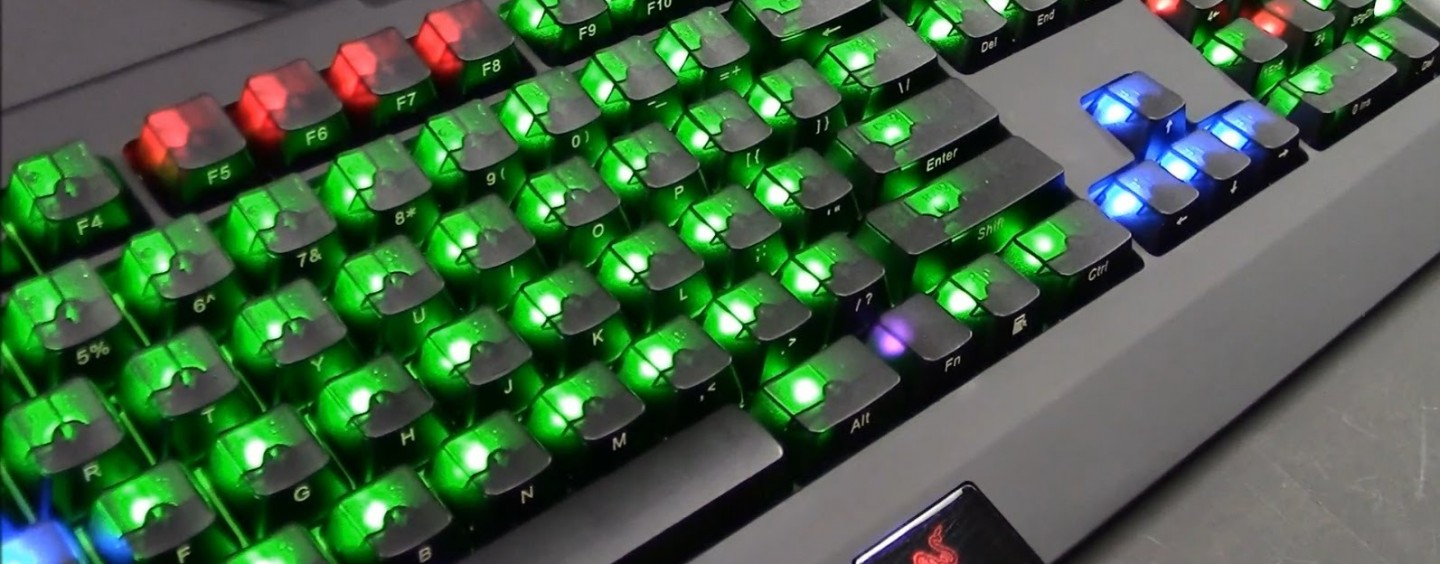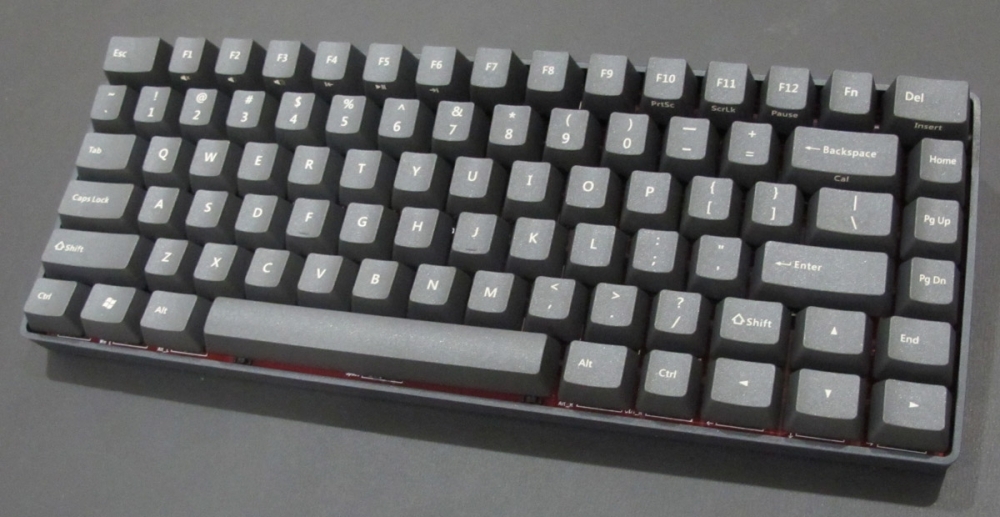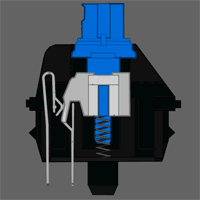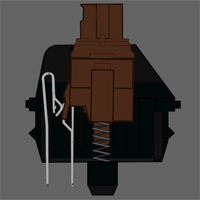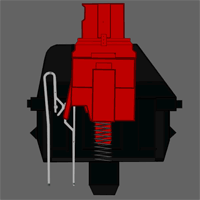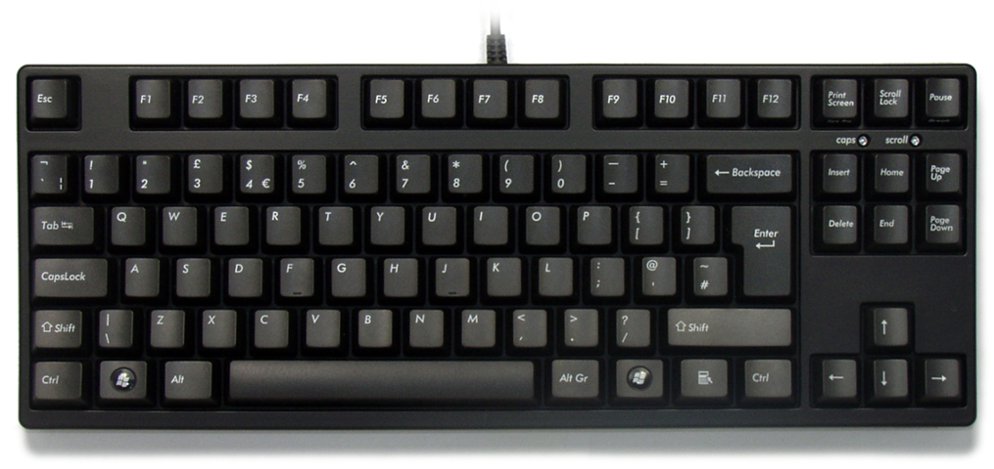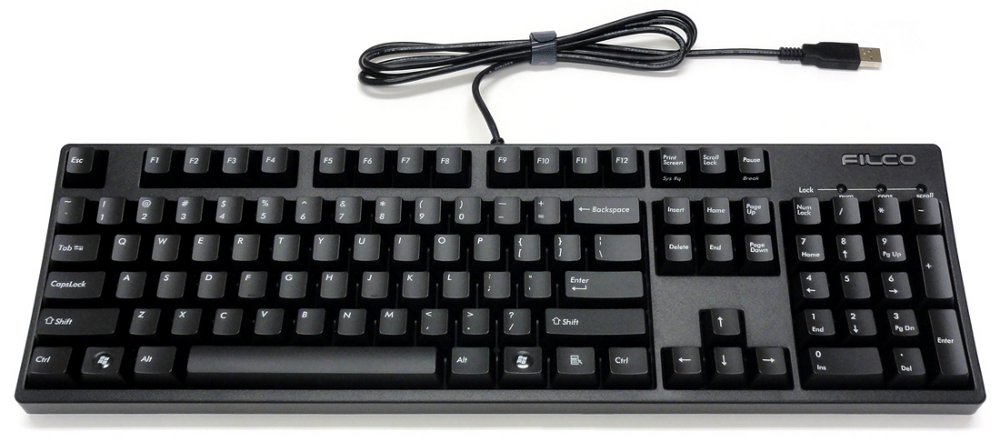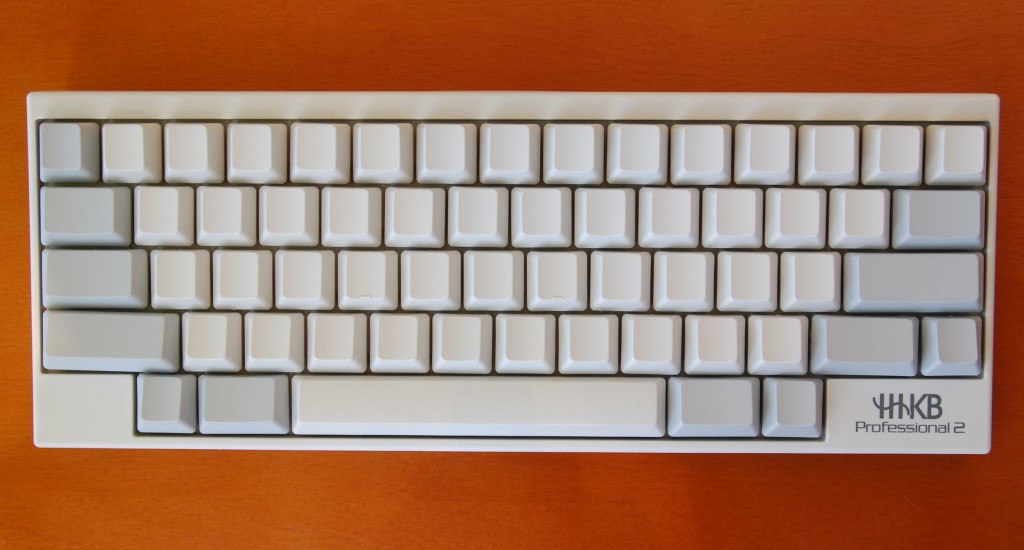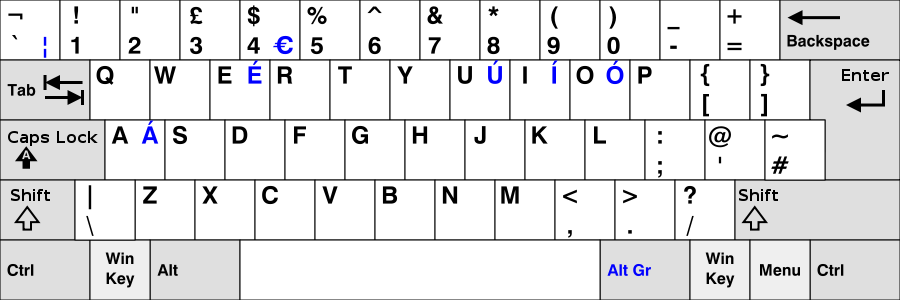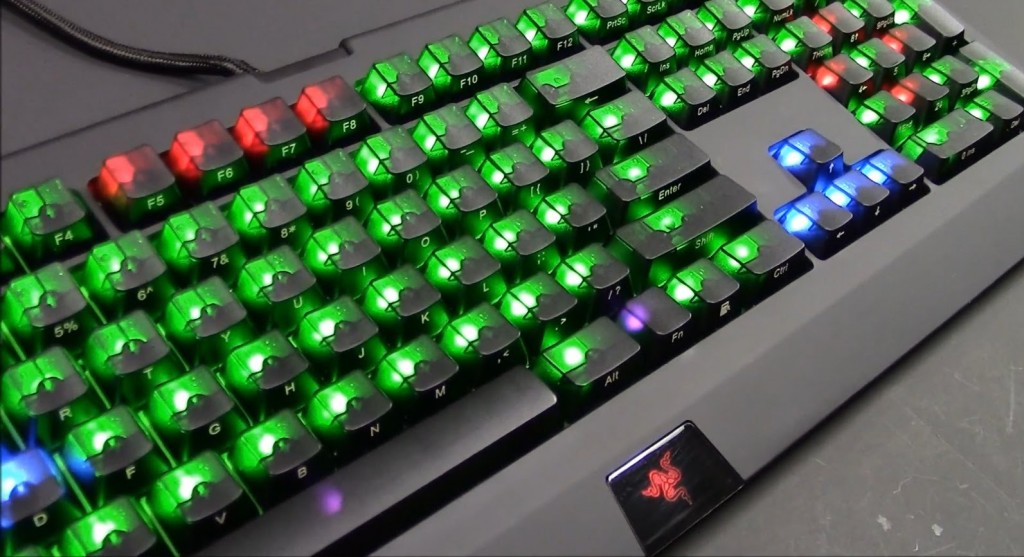Majority gaming keyboards now coming with mechanical switches and all that hoo-haa but did you know that mechanical keyboards were not initially made for gaming? That’s right, mechanical keyboards existed way before games existed, starting with IBM’s legendary Model M. Back then, there were not such thing as membrane (rubber-dome/dome-switch) keyboards or scissor-switch keyboards. The keyboard that came standard would be a buckling-spring keyboard and buying one standalone cost almost as much as a modern high-end graphic card. Computers in this day and age do still come with their own USB keyboards but they use a much cheaper to manufacture rubber-dome keyboard and gone were the days of mechanical keyboards, until much recently.
I myself have been using mechanical keyboards for a few years now and I have to admit, I am never going back to rubber dome keyboards ever again. The satisfying click of a mechanical keyboard is like music to my ears and the tactile feedback of my keys bottoming out is more than enough to keep me typing. There are a lot of questions though: “Why should I buy one?”, “Where do I get one?” and if I do want to buy one; “Which one should I get?”.
The answer to the first question is: Because they last longer, they feel much better and you will prevent the risk of carpal tunnel syndrome from bottoming out those hard to press rubber-dome keyboards. You can pretty much get them at almost any electronics store that sells computer peripherals; especially those that sell PC hardware. Choosing a mechanical keyboard, however will take lots of considerations. Since you’re going to be paying at least RM300 or more for one, you’re going to want to choose the right one on the first buy.
Durability
Mechanical keyboards were made to last a long time and if you take care of them well, they could live well past their expected lifetime. There are some questionable things that may happen to the switches though, if you’re using Cherry MX switches, you’re pretty much good to go, but there are clones out there which you need to be careful of. Keyboards I have personally tested and owned are the Scorpius M10 (out of production), a Steelseries 7G (Cherry MX Black), a Filco Majestouch 2 (Cherry MX Brown) and a Cooler Master QuickFire Ultimate (Cherry MX Blue). So far, I have found that the heavier a mechanical keyboard, the better. The Filco Majestouch 2 came with a metal frame and a dual PCB cutting that made the keyboard feel sturdy and the Steelseries 7G was heavy enough to use as a bludgeoning tool. The Scorpius M10 however was lighter than the others and I could twist and flex the keyboard with minimal strength — it died after a year of usage. Bear in mind that this should be the first thing to consider before buying a keyboard. Also, PBT is better than ABS for key cap material.
Switches
If you’re buying Cherry MX, most likely you’ll have to choose between Blue, Black, Brown or Red key switches. Just a brief run through, the colors of the switches are just to identify what type of tactile response and how they feel, they do nothing to decorate your board once they’re covered with caps. If you’re unsure what type of switch you want, it’s better for you to go out to a PC hardware store and see if they have any of those test caps on display so you can go and fiddle around with them. Note however, that most implementations of the switches might feel a bit different that the switches they put on demo, because customers walk in and smash on the demo buttons all the time till they feel a little mushy.
Note that in all the diagrams below, the actuation point is when the two metal hooks on the left “meet”.
Blue
4mm travel, 2mm actuation, 60g force, tactile, clicky
The blue switch has a very typewriter feel. The Cherry MX Blue switches have very nice tactile click when you bottom out the keys as well as a very pleasing and satisfying clicking sound. They’re not exactly great for gaming because of the travel and feel of the keys. I had blues before, and this was my first ever mechanical keyboard, they were not hard to press but a little annoying because the tactile bump lasts so long that it is very hard to triple-tap keys with rapid succession as you have to wait for that moment when the key resets itself before you can bottom out the key again. A lot of gamers really love these MX Blues however because the sound you get when you bottom out the keys is something you won’t be able to find in other switches.
In my opinion, get this if you really love that strong and loud “clack!-clack!-clack!” which sounds amazing when you’re typing above speeds of 120WPM. The sound is enough to irritate your entire family but the one with his/her hands on the keyboard will love it.
Black
4mm travel, 2mm actuation, 60g force, linear
Cherry MX Blacks are always related to gaming because they do not have a tactile click when you bottom out the key, rather you can push it straight down and it’ll pop straight back up in a very clean and linear fashion. You still feel the key bottoming out when it hits the actuation point and this linear feeling is critical for gaming because you are able to double-tap or triple-tap keys without actually messing around with the tactile bump.
On a personal note, I don’t like these switches for typing though because you actually have to bottom out the entire keyinstead of just pressing it till it actuates for it to register a key stroke. For gaming however, they feel really nice and you almost feel like you pressing a soft cloud in to register your movements or cast your spells, they feel absolutely wonderful. What’s stopping me from getting this keyboard for regular use is because I used to be a programmer and did a butt load of typing. The blacks however can feel a bit heavy but they pay off by having a completely linear travel.
Brown
4mm travel, 2mm actuation, 55g force, tactile
The bread and butter of brown keys is that they were made as a mix for gaming and typing. They are incredibly soft but have a slight tactile bump and very nice audible click when you register a key press. The actuation time of the tactile bump is not a harsh as the Blue keys and they also provide an actuation point for those gamers who actually prefer a gaming keyboard with a tactile click in it. The actuation point is right in the middle of the switch’s travel and the tactile bump is really only there for feels.
I’m using MX Brown switches and I swear by them. Until they can come up with lighter keys with a tactile bump, I’m always going to purchase my keys with brown switches. The reason being, they’re very light to reach actuation point and you don’t feel that “sticking” feeling during the tactile click of a MX Blue, it sort of clicks and then bounces straight back up. It’s very hard to explain the feeling, but they’re light and tactile and I love them for gaming and for typing. They give me confidence that my whenever I make a mistake it’s not the keyboard but my own stupid fingers. The difference they make from Blacks, are they do not need to be bottomed out to register a key-press. Once you get used to them, typing and gaming will be a breeze.
Red
4mm travel, 2mm actuation, 45g force, soft, linear
Cherry MX Red switches are the most lightest of the bunch. I would say they are an improvement over the Cherry MX Blacks and have an extremely linear switch. They need to be bottomed out to actuate the switch but they require so much less force and feel lighter than Black switches. They’re designed specifically for gamers who need to deliver fast repetitive key-strokes and the feeling of bottoming out the keys has to be second to none especially when you’re gaming. They do not have a tactile bump and the only clicky sound you will hear from the Reds are when you bottom out the key. The actuation point is much higher than the Blacks though, so they do actuate some time before you even bottom out the switch, but this is no help to typists because you still don’t have that tactile click to let you know a keystroke has been registered.
There are definitely other key-switches you can look at like Topre switches which are incredibly expensive compared to Cherry MX switches and much less common — or even Alps switches. A full list can be found here if you’re interested.
Full sized, TKL or 60-keys?
Okay, so TKL basically just means “Ten key less”, or Tenkey-less. You basically don’t have your NUMPAD there and 60-keys do not even include the arrow key segment. So which one should you choose? Some manufacturers don’t even give you an option.
Manufacturers like Filco will give you a full-size option…
… As well as a TKL option.
Keyboard manufacturers like Happy Hacking only sell their keyboards at 60-keys and they are incredibly expensive.
Layout
Another thing to be aware about, especially if you’re going to purchase a keyboard online would be the layout of the keyboard, will be you be using the ISO (UK) layout or the standard ANSI (US) layout?
First of, the UK or ISO layout has an extra key between ‘z’ and the left-shift key which forms the backslash or ‘|’ (pipe) symbol.
For the US or ANSI layout, there are only 104 keys, which is one less than the 105 keys that the ISO form factor has.
As a personal preference, I am used to the ANSI layout because I rarely use the symbols which are commonly used in UK keyboards. Also, I’m used to having my ‘|’ or ‘\’ key being right under my backspace key. This is totally preferential but if you’re used to the ISO layout it works just as well, even if you don’t use the UK standard key sets.
Bells, Whistles and other considerations
Some keyboards come with back lights and some don’t. Some keyboards like the new Majestouch Convertible 2 are one of the first few mechanical keyboards to provide Bluetooth connectivity. If you love multi-colored lets, you can take a look at the Razer Blackwidow Chroma — which uses their own Razer Mechanical Switches — and the Corsair Vengeance K70 RGB, although the K70 only comes in Cherry MX Red keys; Both keyboards let you fully customize the color of every individual keys and even the brightness of every key. If you like to buy gear and “make-it-mine”, you could always order in custom key cap sets or translucent sets — like in the picture above — and totally pimp out your keyboard and make it yours. Another thing to consider would be keyboards with a detachable USB cable, which keyboards like the Ducky Shine 4. If you wanna go totally old school, why not get aUnicomp?
Remember to check your order carefully if you are ever ordering online, I accidentally ordered a UK-layout keyboard once before from a reseller but he was nice enough to replace my order with the ANSI layout I wanted.

